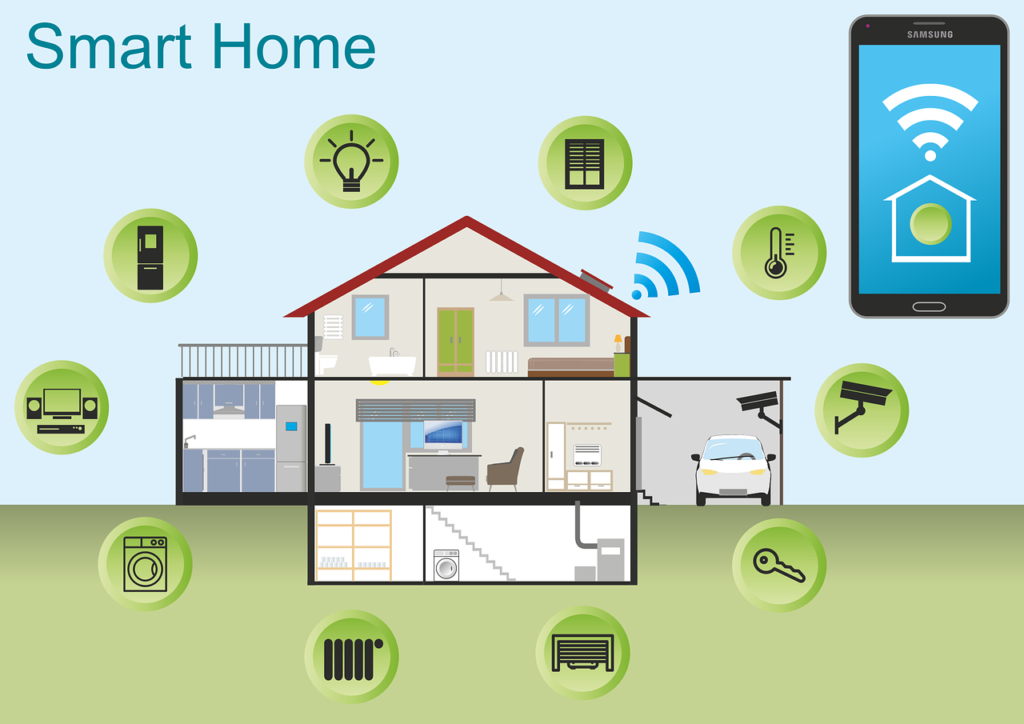Having been touched upon, you already know that a Smart Home Security System can safeguard your home, possessions, and people close to you while using existing technology and being as agreeable to use as possible. When you have a Smart Home Security System in place, you can watch your home from a distance, manage the security devices with your cellular telephone, and obtain notifications instantly if there are extraneous movements.

This is a step-by-step guide on how to install your Smart Home Security System that you will read in this blog post. Yes, even if you have no background in technology, or if you are a professional in the field this guide will fully explain and detail out the process in plain terms preferred by teens and adult audiences.
Table of Contents
What is a Smart Home Security System?
Before moving on to our next step, let us understand what a Smart Home Security System is. Smart Home Security System – A Smart Home Security System is a system of connected devices that secure the home against theft, fire other threats. They are Internet-enabled and can be managed and supervised through your smartphone, tablet, or PC.
Some common devices included in a Smart Home Security System are:
- Smart Cameras: Security cameras that you can view remotely.
- Smart Door Locks: Electronic locks you can control with an app.
- Motion Sensors: Devices that detect movement within your home.
- Smart Alarms: Alarms that alert you to unauthorized entry or threats.
With a Smart Home Security System, you don’t just get peace of mind but also control over your home’s security from anywhere.
Why Set Up a Smart Home Security System?
Oh, there are many reasons why one would desire to install a Smart Home Security System at their home. Let’s look at a few key benefits:
- Remote Access: With a Smart Home Security System, you can control your security devices from anywhere in the world using your smartphone or computer. You can lock doors, view live camera footage, or even speak to someone at the door using a smart doorbell camera.
- Real-time Alerts: The system will send instant notifications to your phone if it detects any unusual activity like motion or unauthorized access.
- Automation: Smart security systems can be set to activate or deactivate automatically based on your schedule. For example, you can program your security system to turn on when you leave the house and turn off when you return.
- Peace of Mind: Knowing that your home is protected 24/7, even when you’re away, gives you peace of mind. With a Smart Home Security System, you can rest easy knowing that everything is under control.
Step-by-Step Guide: How to Set Up a Smart Home Security System
Step 1: Choose Your Smart Home Security System
There are several smart home security brands out there, and each one has different features, devices, and pricing. Some of the most popular options include:
| Brand Name | Key Features | Price Range |
|---|---|---|
| Ring | Smart doorbells, cameras, motion sensors | $100 – $500 |
| Arlo | Outdoor and indoor cameras, smart floodlights | $200 – $800 |
| Nest | Cameras, motion sensors, smart alarms, locks | $150 – $600 |
| SimpliSafe | DIY system with cameras, sensors, and alarms | $100 – $500 |
| ADT | Professional monitoring, cameras, smart locks | $300 – $1,000+ |
The next thing you should think of is what devices you require for your operations, and which budget you are capable of raising. Some systems are simply cameras but others may be full home automation with smart locks, alarms, and sensors.
Once you’ve chosen the system that works best for you, it’s time to get started.

Step 2: Install Smart Cameras
Smart cameras are essential for any Smart Home Security System. These devices allow you to monitor the interior and exterior of your home. Here’s how to set them up:
- Step 1: Choose a location. Install your cameras in areas where they can cover key entry points, like doors and windows. For outdoor cameras, make sure they’re weather-resistant and have a clear view of the surroundings.
- Step 2: Mount the camera. Most smart cameras come with mounting brackets and screws. Use a drill to securely attach the camera to the wall or ceiling.
- Step 3: Connect the camera to your Wi-Fi. Follow the instructions provided by your camera manufacturer to link the camera to your Wi-Fi network. You’ll likely need to use a smartphone app to do this.
- Step 4: Test the camera. Make sure the camera is recording properly and that you can view the live feed from your phone or computer. Adjust the angle if necessary.
Step 3: Install Smart Door Locks
Smart locks allow you to control your door locks remotely using your smartphone. Here’s how to install them:
- Step 1: Remove your old lock. Unscrew the existing deadbolt and handle from your door, and set them aside.
- Step 2: Install the smart lock. Follow the instructions provided by your smart lock manufacturer. Most smart locks are designed to be easy to install without the need for professional help.
- Step 3: Pair the lock with your app. Open the smartphone app for your smart lock and follow the instructions to connect it to your home’s Wi-Fi network.
- Step 4: Set up user codes. Most smart locks allow you to create multiple user codes, which you can assign to family members or trusted visitors. You can also set a temporary code for housekeepers or delivery personnel.
Step 4: Set Up Motion Sensors
Motion sensors are great for detecting unusual activity around your home. Here’s how to install them:
- Step 1: Place the sensors in strategic areas. Common locations include near doors, windows, and hallways. Make sure the sensors are positioned where they can detect movement clearly.
- Step 2: Connect to the app. Like other devices in your Smart Home Security System, motion sensors will need to be connected to your smartphone app. Follow the setup instructions to connect them to your system.
- Step 3: Adjust sensitivity. Some motion sensors allow you to adjust the sensitivity to prevent false alarms. Test the sensor to make sure it’s working properly.
Step 5: Set Up Smart Alarms
Smart alarms are an important part of your Smart Home Security System, as they will alert you to any unauthorized entry or emergencies.
- Step 1: Install the alarm system. Depending on the system you’ve chosen, the installation process may vary. Many smart alarm systems come with a base station that connects to the internet and communicates with the other devices in your system.
- Step 2: Connect the alarm to your smartphone. Follow the instructions to pair the alarm with your smartphone app.
- Step 3: Set up emergency contacts. Most smart alarms allow you to set emergency contacts, like family members or neighbors, to be notified in case of an alarm.
Step 6: Test Your Smart Home Security System
Once you’ve installed all your devices, it’s time to test the entire system to make sure everything is working properly:
- Test Cameras: View the live feed from each camera and check that the video quality is clear. Ensure that all cameras are positioned to cover the areas you want to monitor.
- Test Door Locks: Lock and unlock the doors using your smartphone app to make sure the smart lock is responding as expected.
- Test Motion Sensors: Walk in front of each motion sensor to ensure it detects movement and sends notifications to your phone.
- Test Alarms: Trigger the alarm manually to make sure it sounds correct and that the notifications are sent to your phone or emergency contacts.
Step 7: Set Up Automation and Notifications
With everything set up, you can now create automation rules to make your Smart Home Security System work seamlessly. For example:
- Set up schedules: Program your system to automatically arm when you leave home and disarm when you return.
- Create geofencing: Some systems offer geofencing, which means the security system will arm itself when you leave the designated area (e.g., your home) and disarm when you return.
- Customize alerts: Set up alerts for specific events, such as when a motion sensor is triggered or when someone enters your home through a smart lock.
Conclusion: Enjoy a Safer Home with Your Smart Home Security System
Organizing your own Smart Home Security System is a fast and efficient way to keep your home and your closest ones secure. It is now simple to install cameras, locks, motion sensors, alarms, and more, basically, any device that can be connected to provide you with essential knowledge and control from wherever you are with the aid of the following steps outlined in the guide.
The combination of the remote control of your home, receiving timely alerts on your Smart Home Security System, and automatic management of security regimes, your Smart Home Security System can also give you and your family security and comfort.
